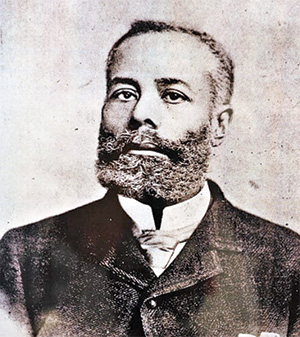By Jan White
[email protected]

The Industrial Revolution was a period of rapid expansion of science, mechanization, and technology in the 18th century and marked the transformation of the largely rural way of life into an industrialized urban lifestyle. One of the most impactful inventions of that time was the steam engine, which revolutionized the manufacturing and transportation industries.
The first steam locomotives were imported from England in 1829 and were used for transporting both materials and people across the country. Reliability was the cornerstone of the locomotive industry – if a train didn’t reach its destination on time, both manufacturers and communities suffered the consequences.
For the steam engines to function correctly, they needed a constant supply of lubricating oil for the cylinders and, sometimes, the bearings and axle box mountings to prevent them from overheating. Initially, this involved stopping the train at various intervals to apply the oil, which impacted the ability of the train to arrive on schedule.
But a gentleman by the name of Elijah McCoy changed all that.
Elijah McCoy was born on May 2, 1844, to George and Mildred McCoy, former slaves who had used the Underground Railroad to flee Kentucky to Ontario, Canada. At age three, McCoy and his family moved back to the U.S., eventually settling in Ypsilanti, Michigan, where his father opened a tobacco business. From a young age, McCoy loved playing with his father’s machines, experimenting with different ways to fix and improve them.
When he was fifteen, McCoy attended school in Edinburgh, Scotland, where he studied mechanical engineering. When he returned to the U.S., he took a position as a fireman in the Michigan Central Railroad train’s boiler room. The job required him to shovel coal into the train’s furnace and maintain the engine’s moving parts, axles, and bearings. When McCoy saw the delay caused by the frequent stopping to apply oil to the pistons, he put his education to work and developed a more effective way to lubricate the engine and prevent it from overheating. In 1872, McCoy patented his “improvement in lubricators for steam engines,” commonly known as an “oil-drip cup.”
“McCoy’s patented device was quickly adopted by the railroads, by those who maintained steamship engines, and many others who used large machinery,” wrote a historian for the University of Michigan. “The device was not particularly complicated, so it was easy for competitors to produce similar devices.”
But McCoy’s device was superior to the knock-offs, and railroad engineers who wanted to purchase the more effective oil-drip cup would request it by name and ask if the locomotive was fitted with “the real McCoy” system.
Throughout his life, McCoy continued improving his automatic lubricator’s effectiveness and design. The Michigan Central Railroad, recognizing his value to the company, promoted him to the position of an instructor, where he taught others how to use his inventions. He later became a consultant to the railroad industry regarding patents. By the time of his passing in 1929, McCoy held fifty-seven patents.
While etymologists purport several theories about the origin of the phrase, the inventor who rose from humble beginnings to patent what would become one of the most important inventions in the early 20th century indeed was “The Real McCoy.”










Comment
Comments